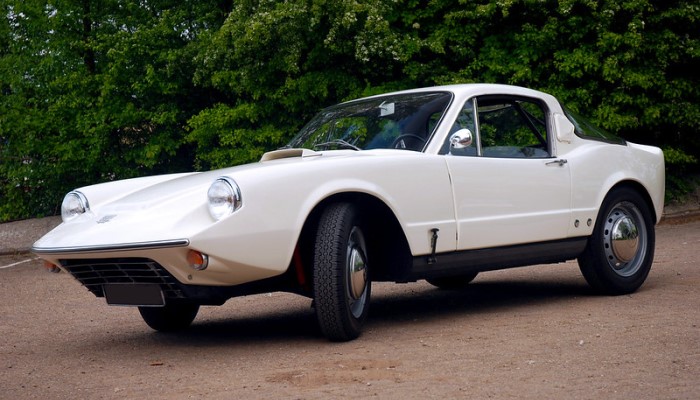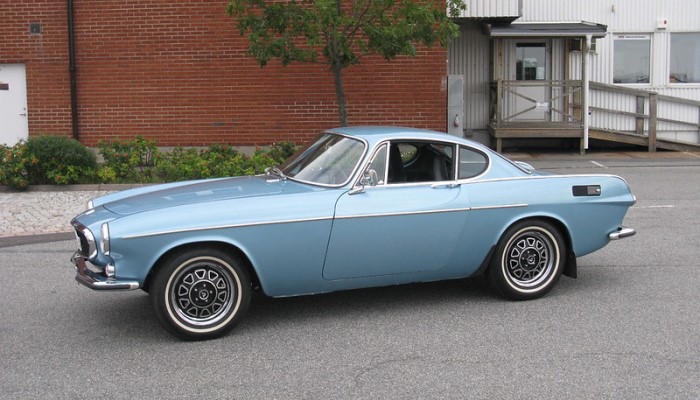Saab 92
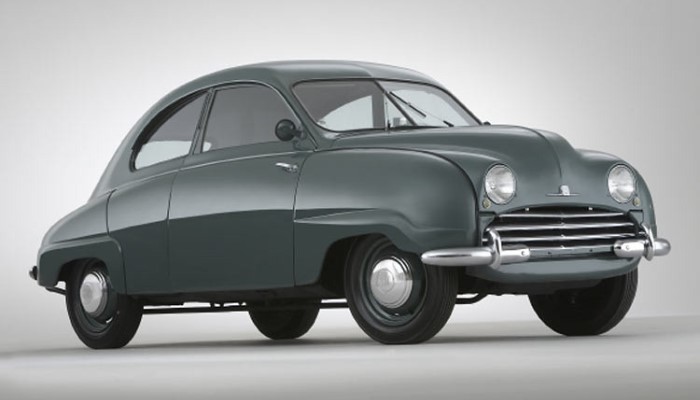
Photo: "Saab 92" by yellow book
Aviation Genes
The cars of this company have always been distinguished by a special, extravagant design. The very first production Saab car was no exception. Before the World War II and during the war, the Swedes increased the production capacity of the defense industry. The war was over; the power remained, and it had to be used somehow.
The Saab company, which produced military aircraft, selected civilian products for production. The list of likely products included motorcycles, trucks, boats, household appliances, and small cars; larger cars were made by Volvo. The choice fell on small cars. Time has shown the correctness of this choice.
The car was developed by 20 aeronautical engineers led by Gunnar Ljungström and Sixten Sason. The product of their activities was a prototype called Saab UrSaab.
The prototype was ready by 1947, and the design of the apparatus was, to put it mildly, original. At the very first show, dealers were asked to bring the design closer to simpler, earthly standards. The result of fine-tuning UrSaab to the requirements of dealers was prototype number 92002.
Although the design of the future Saab 92 ceased to look like a flying saucer or something like that, the device was still very different from the cars of that period.
Aviation genes are mentioned in the car body design. The body panels of the car had a deep drawing. As a result, the body was assembled from fewer parts than competitors of the same type.
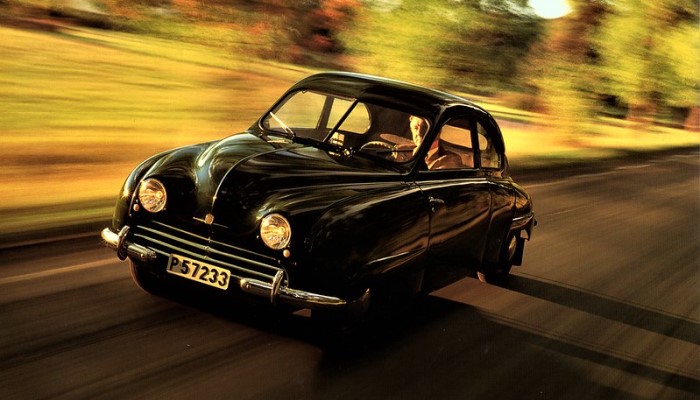
Photo: "1947 Saab 92" by aldenjewell
The roof was made in one piece with racks, and only then were holes for windows and doors cut in it. The body of the car was load-bearing, and it held the record for torsional rigidity among cars of that period.
A contract was signed for the supply of DKW engines. In DKW tradition, the engine was a two-stroke. The working volume is 46 cu in (750 cc), the power is 25 hp, and the number of cylinders is two. As a bonus of cooperation with DKW, the Saab 92 was front-wheel drive. The gearbox is three-speed; the first gear is not synchronized.
Production and Development
Production of the Saab 92 began on December 12, 1949. Saab produced 1,246 cars in 1950. Philipsons, at that time the largest car dealer in Scandinavia, became the main dealer for the company.
The contract with Philipsons was concluded for the supply of 8,000 Saab 92 cars over three years. But sales exceeded all the wildest forecasts. A queue of 35,000 buyers lined up for the new Saabs.
The first Saab 92s are easily identified by their livery. Most of the cars were painted a green color left over from the production of military aircraft. In 1953, the car underwent a slight restyling. Slightly redesigned radiator grille.
The redesign of the stern was more radical. The trunk lid opened, and in order to get to the trunk, it was necessary to fold back the rear row of seats. The gas tank neck moved to the fender, and the shape and location of the brake lights changed.
Slowly improved the technical part
In 1954, the car received a new Solex 32BI carburetor and a new ignition system. Engine power was increased to 28 hp. In 1955, the Saab 92 began to install an electric fuel pump.
It was with the Saab 92 that the export of the company's cars to the USA and Britain began. The success of the car in these markets was limited, but for Saab, this result was also a success.
Sporting Career
With the Saab 92, the sporting career of the cars of this Swedish company began. As early as 1950, two Saabs took part in the Monte Carlo Rally. Cars did not have special training and did not take high positions.
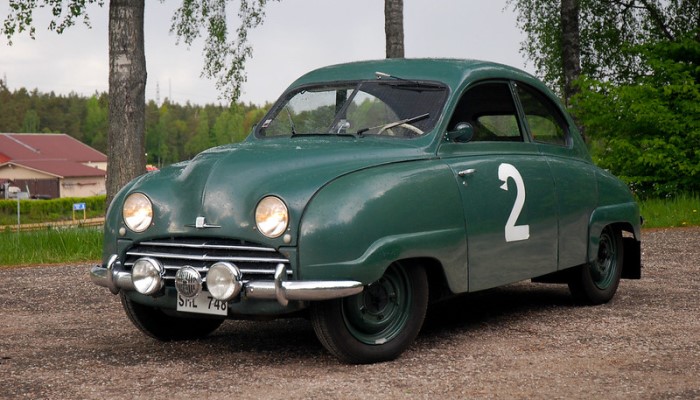
Photo: "Saab 92 Rally (1950)" by Jelger Groeneveld
But in 1952, Greta Molander won the Monte Carlo Rally in the women's category, the so-called "Coupe De Dam". The Saab 92 Swedish Rally Championship was unmatched.
The Saab 92 was produced from 1949 to 1957. Thanks to the successful design, the car was a success with the consumer, which allowed Saab to fearlessly go through the transition from military to civilian products.
Created for Car Enthusiasts
For passionate car collectors and enthusiasts, the Saab 92 holds immense value due to its rarity, unique design, and contribution to automotive innovation.
From an aesthetic standpoint, the Saab 92 boasts a distinct and charming appearance that captures the essence of vintage European cars. Its curvaceous body, sleek lines, and attention to detail make it an eye-catching addition to any collection.
The early Saab badges and emblems further highlight its historical importance, showcasing the brand's humble beginnings. Beyond its visual appeal, the Saab 92 is revered for its groundbreaking engineering. This vehicle was one of the first Saab models to feature a front-wheel-drive layout, which was a revolutionary concept at the time.
Its compact size, efficient engine, and lightweight construction made it a practical and nimble choice for driving enthusiasts in post-war Europe. Car collectors are often drawn to such pioneering vehicles that represent pivotal moments in automotive development.
Due to its age, finding a well-preserved Saab 92 may require some diligent searching, but for avid car collectors, the hunt for rare gems is part of the thrill. Once obtained, owners of this magnificent piece of automotive history can enjoy the pleasures of owning a truly unique vehicle that tells a compelling story.
In conclusion, the Saab 92 is an exceptional choice for car collectors seeking a distinctive and historically significant addition to their collection. Its allure lies not only in its captivating design but also in its role as a trailblazer in automotive innovation.
With its scarcity, engineering prowess, and visual appeal, this vintage Saab is undoubtedly a valuable and sought-after gem for enthusiastic collectors.

Unique Car Zone Team
A group of several fans of everything that moves on four wheels, a few article creators, a couple of marketing strategists, designers, web developers, and lots of coffee.




